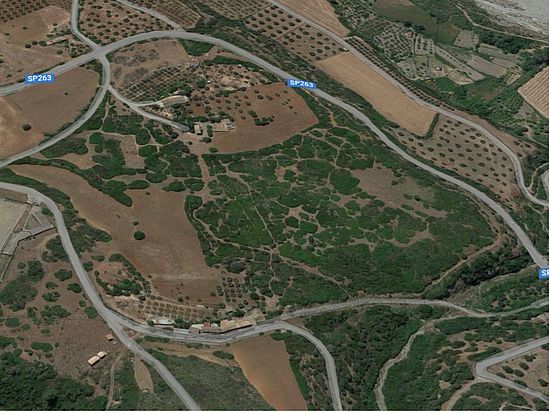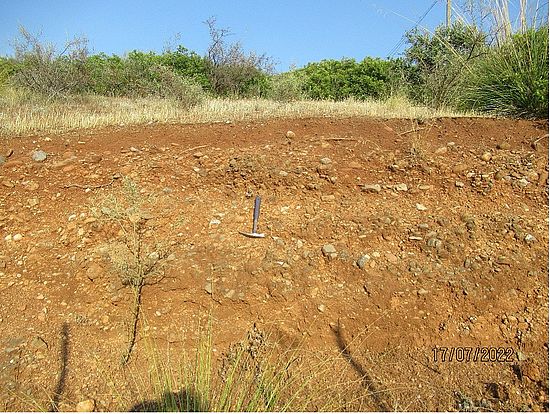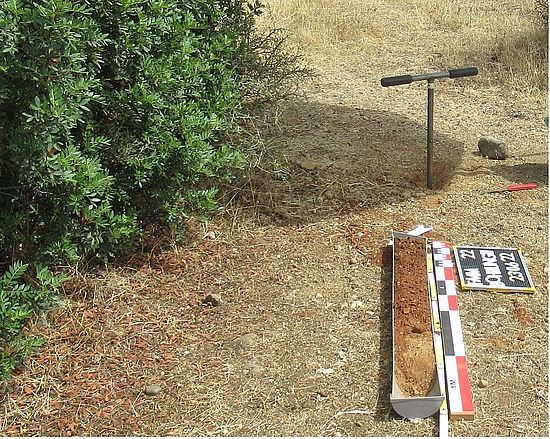Geo-archaeological and topographical studies on the origin of the Macchiabate plateau and its history of use as a necropolis




While the funerary archaeology of Southern Italy until recently dealt almost exclusively with individual graves or the burial ground as such, the research presented here focuses for the first time on the physical and social landscape in which these necropoleis - in this specific case the Macchiabate necropolis of Francavilla Marittima - are embedded and thus on the question of the extent to which the natural terrace formation and subsequent Holocene formation processes have determined the layout and development of the burial ground. The Macchiabate plateau lies in front of the settlement hill Timpone della Motta at the foot of the Pollino Mountains facing towards the coastal plain. Earlier topographic surveys on the Macchiabate plateau (Guggisberg et al. 2021) revealed heavily furrowed areas as well as relatively smooth land surfaces in between burial mound structures. This has raised numerous questions about the origin and history of the necropolis.
The research involves analysis of the topographic appearance of the Macchiabate plateau in terms of its natural and anthropogenic history, in order to better understand its importance as a burial place within the ancient settlement landscape of the Sibaritide. The characteristics and spatial patterns of the landforms, sediments and soils are analyzed, combined with archaeological and historical data, in order to obtain insight in the evolving landscape and provide information about the stratigraphy and the horizontal and vertical extent of the archaeological site. From this geo-archaeological and landscape-archaeological approach, I intend to gain fundamental insights into the question of why the necropolis came into being precisely at this spot, how the topography determined the use of the burial ground and shaped its ‘end’, and to what extent post-ancient agricultural use of the terrace or other anthropogenic interventions have changed the archaeological appearance of the necropolis. Questions to be dealt with in this context involve the impact of hillslope processes, the accessibility of the graves from the settlement or the surrounding area, the importance of the ancient topographical relief for the visibility and placement of particularly prominent graves, and the geographical origin of the stones used to build burial mounds on the Macchiabate plateau.
The research includes geoarchaeological investigations in the vicinity of the plateau and on geomorphologically similar terraces in the foothills of the Pollino mountains not used for funerary purposes, which can provide important information for understanding the anthropogenic landscape of the Macchiabate.
Limiting factors in the study area are the thick vegetation and gravelly, compact soil. These make ground surveying and excavation difficult. Reconstruction of landscape use is complicated because the history covers at least 2,900 years and archaeological layers from different periods can be disturbed or completely removed. An objective of the research is therefore to apply and test various methods from the earth and environmental sciences and evaluate their advantages and disadvantages.
Selected literature
Bellotti P., P. Dall’Aglio, L. Davoli, K. Ferrari 2006: La Piana di Sibari. Reciproche influenze tra variazioni morfologiche e popolamento, in Agri Centuriati, pp. 73-99, N. 3, 2006.
Colelli C. 2015: Topografia e viabilità dell’insediamento del Timpone della Motta, in Brocato P. (ed.), Note di archeologia calabrese, Cosenza, pp. 59-70.
Feiken H. 2014: Dealing with biases: three geoarchaeological approaches to the hidden landscapes of South-Italy. Thesis University of Groningen.
Guggisberg, M.A., M. Billo-Imbach, N. Spichtig 2021: Basler Ausgrabungen in Francavilla Marittima (Kalabrien). Bericht über die Kampagne 2020 AntK 64, 2021, 112-120.
Sevink J., M. den Haan, M. van Leusen 2016: Soils and Soil Landscapes of the Raganello River Catchment (Calabria, Italy). Raganello Basin Studies 2, Groningen.
